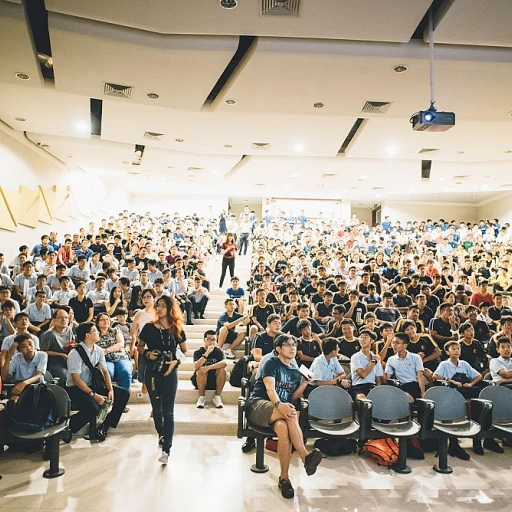
Understanding Centralized Staffing
The Essence of Centralized Staffing in Modern MSP Environments
In the ever-evolving landscape of healthcare, the need for effective workforce management has never been more critical. At the heart of this lies the concept of centralized staffing, a model that emphasizes coordinated resource management, particularly in large health systems and organizations. The centralized model of staffing enables healthcare facilities to optimize their scheduling, ensuring that patient care remains uncompromised even amidst fluctuating staffing levels.
Unlike decentralized staffing approaches, where each department or unit independently manages its scheduling and recruitment, centralized staffing streamlines these processes across the entire organization. This shift towards a centralized system has been buoyed by advancements in technology, allowing for seamless scheduling and efficient management of the nursing workforce.
With centralized staffing, healthcare facilities can ensure that nurses and other certified care providers are allocated effectively and equitably. This not only alleviates the burden on individual departments but also fosters a more cohesive organizational structure. The recruitment and shift scheduling of nursing staff become less cumbersome, as a unified staffing office takes on the responsibility, paving the way for improved care delivery.
This transition requires thorough understanding and readiness to tackle challenges that might arise during implementation, which we'll discuss further. Moreover, insights from successful implementations can serve as guiding models for those seeking to explore this staffing model. For those keen on diving deeper into staffing strategies, exploring temporary staffing solutions in Richmond, Ky can provide valuable perspectives on various staffing methodologies.
Advantages of Centralized Staffing
Enhanced Operational Efficiency
The centralized staffing approach offers significant advantages in terms of operational efficiency. By establishing a singular point for organizing resources, such as a staffing office, healthcare facilities can streamline their staffing scheduling processes. This centralized model eliminates the fragmented nature of decentralized staffing systems, leading to better alignment of staffing levels with patient care requirements. It fosters efficiency by making it easier to allocate nursing staff where they are most needed, thus reducing potential overlaps and underutilization of available workforce.
Improved Resource Management
Centralized staffing allows for more effective workforce management. By consolidating resources, organizations can better manage their health and social care services, ensuring there is an optimal number of nurses on duty at all times. This method aids in the retention of quality nursing personnel as it can support career development, offer stability, and improve job satisfaction among nursing staff. The alignment of scheduling staffing using data-driven insights contributes to more effective strategic planning, which is vital in both acute and long term care settings.
Consistency in Patient Care
A centralized staffing model ensures that resources are efficiently deployed, which directly influences the consistency of patient care. With a well-structured rollout, any healthcare setting can minimize disruptions in case of unexpected staff shortages. This is particularly crucial for specialized roles such as certified nursing staff or in areas demanding acute care provision. Consistency is, therefore, an inherent benefit of this staffing model, ensuring that all patients receive adequate and timely care.
Data-Driven Decision Making
Centralized staffing systems empower healthcare organizations with robust data analytics capabilities. By collecting and analyzing workforce data across various segments, managers can make informed decisions about recruitment, shift allocations, and scheduling nursing. These insights support a more responsive model that can adapt to changing demands and help in crafting a proactive rather than reactive solution. The integration of a central staffing system with data analytics propels leadership's ability to foresee trends and manage resources dynamically.
Challenges in Implementing Centralized Staffing
Overcoming Hurdles in a Centralized Approach
Implementing a centralized staffing model in healthcare facilities and other sectors presents certain challenges that organizations must address to fully reap the benefits. Understanding these hurdles is crucial for effective workforce management and achieving optimal staffing levels.- Coordination and Communication: Transitioning to a centralized model often involves an initial phase of disrupted communication. Ensuring seamless coordination between the staffing office and various departments requires strong organizational management to align goals and procedures. This shift from a decentralized system can initially lead to confusion among nursing staff and other personnel about scheduling and resource allocation.
- Integration with Existing Systems: Integrating a new centralized staffing model with existing healthcare systems, particularly those involving nurse scheduling or shift management, might require technological adjustments. In some cases, the technology's role becomes an obstacle if there's resistance to adopting new staffing scheduling tools or central staffing software that alter current processes. Carefully planned training and support are essential to overcome this resistance.
- Loss of Departmental Autonomy: A potential downside of central staffing models is the perceived loss of autonomy at certain organizational levels. Departments accustomed to managing their own staffing might feel disconnected from the decision-making process, leading to potential dissatisfaction among nursing staff and other team members. Encouraging open dialogue and involving departments in planning can help mitigate these concerns.
- Balance Between Centralized and Decentralized Models: Achieving a balance between centralized and decentralized staffing approaches is another challenge. While centralization offers benefits, such as consistency in staffing levels and resource allocation, the decentralized model often provides flexibility that can be missed when shifting to a more centralized system. This balance requires careful workforce management strategies tailored to the specific needs of each department and the overall healthcare system.
Technology's Role in Centralized Staffing
The Crucial Role of Technology in Centralized Staffing Systems
When it comes to the implementation of a centralized staffing model, technology serves as the backbone, facilitating seamless operations and optimal management of the workforce. Its influence reaches across various facets of staffing, from recruitment to scheduling, ensuring both efficiency and effectiveness in healthcare facilities and beyond. To begin with, advanced software tools in healthcare facilities, such as nurse scheduling systems and staffing scheduling platforms, play a pivotal role in streamlining the operations of a staffing office. These tools help health systems achieve a balance in staffing levels, ensuring that nursing staff are deployed where they are most needed to provide quality patient care. Moreover, centralized scheduling systems enable healthcare organizations to manage shifts efficiently, adapting quickly to changes in patient demand or staff availability. Importantly, these technologies are not limited to mere scheduling. Workforce management solutions harness data analytics to provide valuable insights into staffing patterns and potential optimizations. Such solutions allow for the strategic allocation of resources, addressing the recurring challenges faced in a decentralized staffing model. By transitioning to a centralized model aided by technology, healthcare organizations can better forecast staffing needs, leading to improved recruitment strategies for certified nursing professionals and better long-term healthcare outcomes. In the realm of staffing, the use of technology also extends to enhancing the hiring process itself. Digital platforms facilitate the recruitment of healthcare staff by connecting qualified professionals with organizations that need their skills, thereby minimizing gaps in care delivery. Emerging technologies promise further innovations in nurse staffing, where smart scheduling might take workforce management to the next level in terms of efficiency and staff satisfaction. Ultimately, the success of a centralized staffing system heavily relies on the right technological infrastructure. As healthcare organizations look toward the future, ongoing advancements in this area, driven by the needs of both the healthcare environment and digital innovation, are continually shaping the evolution of nurse scheduling systems and staffing models to better meet the needs of the health industry.Case Studies: Success Stories in Centralized Staffing
Real-World Examples of Successful Centralized Staffing Implementation
When considering centralized staffing, several healthcare organizations have set benchmarks by successfully integrating centralized models across their operations. Their experiences provide valuable insights for those contemplating a similar approach. One notable case is a large healthcare system that transitioned from a decentralized staffing model to a centralized staffing office. By doing this, they optimized their staffing levels across multiple facilities. This shift allowed them to effectively manage nurse staffing and other healthcare professionals, ensuring that the right resources were available when and where they were needed most. As a result, patient care improved due to the consistent availability of certified nursing staff, reducing the burden of last-minute shift changes and recruitment challenges. Another example involves a network of long-term care facilities. The organization adopted a centralized scheduling system to better manage its workforce. The centralized model they employed focused on staff allocation, balancing nursing schedules, and predicting high-demand periods. This proactive staffing scheduling helped in avoiding overstaffing or understaffing situations, which in turn enhanced their operational efficiency and patient satisfaction. A key takeaway from these case studies is the critical role of technology in supporting centralized staffing. Hospitals and healthcare facilities leveraged advanced workforce management systems to streamline their scheduling processes. This integration not only facilitated smoother operations but also ensured better resource allocation, ultimately leading to improved healthcare outcomes. These successes highlight the transformative impact that centralized staffing can have within healthcare organizations. By adopting this model, facilities can ensure optimal staffing, efficient resource management, and a higher standard of patient care. Such advancements set a precedent, showing how the right approach can enhance both organizational performance and patient satisfaction in a meaningful way.Future Trends in Centralized Staffing for MSPs
Emerging Trends in Centralized Staffing for MSPs
As the landscape of managed service providers (MSPs) continues to evolve, the centralized staffing model is gaining traction, particularly in healthcare facilities. The future of staffing in MSP environments is being shaped by several key trends that are worth noting.
- Integration of Advanced Technology: The role of technology in staffing is becoming increasingly significant. Advanced workforce management systems are being integrated to streamline scheduling and enhance the efficiency of nurse staffing. These systems help in optimizing staffing levels and ensuring that the right resources are available at the right time, improving patient care outcomes.
- Data-Driven Decision Making: With the rise of big data, healthcare organizations are leveraging analytics to make informed staffing decisions. This approach aids in predicting staffing needs, managing shift schedules, and reducing the reliance on decentralized staffing models. By analyzing patterns and trends, organizations can better manage their workforce and improve overall care delivery.
- Focus on Flexibility and Scalability: As healthcare demands fluctuate, the need for a flexible and scalable staffing model becomes crucial. Centralized staffing allows for quick adjustments to staffing levels, ensuring that healthcare facilities can respond to changing patient needs efficiently. This adaptability is essential for long-term success in the healthcare sector.
- Emphasis on Employee Well-being: The well-being of nursing staff is becoming a priority in staffing management. Centralized scheduling systems are being designed to consider nurse preferences and work-life balance, reducing burnout and improving job satisfaction. This focus on staff well-being is crucial for retaining skilled professionals in the healthcare industry.
- Collaboration Across Departments: A centralized staffing office encourages collaboration between different departments within a health system. This collaboration enhances communication and coordination, leading to more efficient resource allocation and improved patient care.
These trends indicate a shift towards a more integrated and efficient staffing model in MSP environments. By embracing these changes, healthcare organizations can enhance their staffing strategies, ultimately leading to better patient outcomes and a more sustainable workforce.












